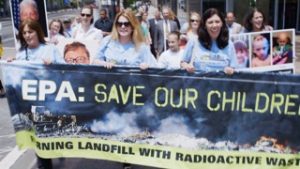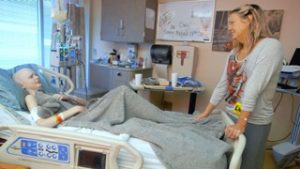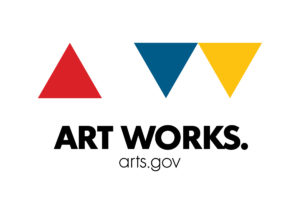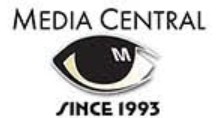by Flo Dwek
A major metropolitan area in the United States lies dangerously close to a large landfill containing radioactive waste — and an escalating underground fire. As concerned citizens attempt to halt a potential catastrophe, they discover that they may be running out of time to save their homes, health and lives.
– Chuck Willett—AFI DOCS Program Description

HBO Documentary Films
Dir: Rebecca Cammisa; 2017; 96 min
Sat. Jun 17 / 7:00 PM / LANDMARK 1
Sun. Jun 18 / 9:15 PM / AFI SILVER 3
Suppose you found out after buying a house in a peaceful country glade, with a lovely creek running through it, that it was really, really close to an old landfill containing radioactive waste…that is also burning and raging deep underground.
Worse still, suppose you hired a reputable company to check your house out, only to find it contaminated with dangerously high levels of radiation.
And in your daily encounters with folks in the town, and from anecdotal information, you discovered that over the years, a great many people in the area—both children and adult—had gotten sick and died from rare forms of cancer and other diseases.
Your gut reaction might certainly be: ‘I’d hightail it out of there as fast as possible and never look back!’
Well, think again, because that’s exactly what hundreds, if not thousands, of residents in Bridgeton, Missouri, have had to contend with over a period of decades. Sadly, most of them have not had the luxury of being able to walk away from their homes, jobs and lives.
ATOMIC HOMEFRONT, directed by Rebecca Cammisa, spotlights the gutsy environmental activism of a group of local women (“Just Moms”) and their desperate attempts to rouse officials and agencies to contain and halt any further damage from this untenable, hazardous situation.
This sobering documentary is worth seeing on many levels, particularly as a story about the cynical and grim realities that wreak havoc on the most sincere forms of advocacy, awareness raising and protest. It’s a film that bears witness to the dark stain of lethargy and denial that can spread through industry and government bureaucracy at all levels.
Cammisa and her crew are to be commended for their keen depiction of the turmoil, struggles, and setbacks that smolder beneath this unfinished story. As they drill down, relentlessly probing for the facts to surface, they slowly uncover and show us the glimmering bits and pieces of the unvarnished truth that have meandered through the heartbreak and heroism of an imperiled community.
Look for this fearless doc to screen on HBO in the coming months. A Q&A with Director Rebecca Cammisa follows.
MEET THE FILMMAKER: REBECCA CAMMISA

by Flo Dwek
WIFV: How did you first learn about the St. Louis radioactive waste landfill and its apparent hazards, perils and links to a range of serious, life threatening health issues?
CAMMISA: From a geologist friend who was aware of the events unfolding in North St. Louis County.
WIFV: Why was the radioactive waste originally stored near an urban landfill? Was there little scientific input or knowledge about such hazards during the late 1940’s and early 1950s?
CAMMISA: The radioactive waste was not “stored” in the West Lake Landfill. It was illegally dumped there by a trucking company hired by the Cotter Corporation in 1973. There are quite a few documents detailing Cotter’s requests to the US Government to take back the residual waste the company had problems with the disposal of. The government refused responsibility for the waste and the waste ended up in a nearby landfill. That landfill was West Lake. Presently, under the Superfund law, the Cotter Corporation is named as a responsible party because of the dumping. The DOE and Republic Services are also PRPs.
I have read historical accounts that the hazards of exposure to radioactive waste was well known by the Atomic Energy Commission in the 1940s. The AEC commissioned health studies on workers and their families. The results of these studies–that exposure to radiation was extremely harmful–were both lied about, covered up, and kept from the public.
There is a fascinating book titled, Plutopia, by historian Kate Brown. This book provides exhaustive research on what the AEC knew about radiation exposure on humans–and when they knew it.
WIFV: To the best of your knowledge, what concrete actions, if any, have former or current EPA officials done to address this grave situation?
CAMMISA: The EPA has had control of the West Lake Landfill since 1990. I began researching and filming in 2014; therefore, I cannot speak to what former EPA officials, decades ago, have done to address the myriad of problems at this landfill.
Some questions I do have are: Should the DOE have transferred control of the landfill to the EPA in the first place? Considering that radioactive waste was dumped into an unlined old quarry, should the DOE have stepped in to do the cleanup themselves–and right away? Did the DOE give the site to the EPA because under Superfund Law, the cost of cleanup could be spread around to potentially responsible parties, which in effect would get them off the hook? In all fairness, I think one should look back before the EPA’s involvement to find answers to whom else dropped the ball and contributed to this nightmare.
Also, because EPA officials, both from headquarters and from EPA Region 7 refused to do an on-camera interview with us and answer questions, it is hard for me to speak to what all of their concrete actions have been.
WIFV: Please tell us a bit about the extensive research and detailed work that went into the impressive explanatory graphics and geographical mapping that your team used so effectively to depict the extent of the radioactive waste problem and its implications for thousands of St. Louis residents.
CAMMISA: Personally, I have read through hundreds, (maybe thousands?) of documents that provide fascinating insight into how this modern day tragedy came into being. Republic Services, the owner and operator of the landfill, and the Missouri Department of Natural Resources, the state regulator of the landfill refused to speak with us on-camera, therefore we could only go by the data that both entities made available to the public. We based our maps on the locations of the subsurface fire and the rad waste on official data. That being said, I cannot hang my hat on whether their data is reliable. Certainly, by the end of our film, it is clear that the data provided may not have been totally accurate.
WIFV: So much of this powerful film relies on the deeply personal aspects of the overall storyline and its many related, troubling stories. What was the most important thing you all did to gain the trust and confidence of those who felt imperiled and affected by this problem?
CAMMISA: I do not think it is what we did. The residents themselves have real fears and suspicions that have mostly all come true. I believe people trusted us because they were happy to know that we were listening and that we cared. By residing in St. Louis and committing months to filming, many truths unfolded and what we captured ended up validating what people were concerned with all along.
WIFV: Could you clarify what Bill Gates’ involvement is or has been in this ongoing saga? Has he or his associates ever responded publicly to the problem?
CAMMISA: The Bill and Melinda Gates Foundation did not agree to an interview with us, so I cannot elaborate on the Foundation or Cascade Investment’s continued involvement with the landfill. Other than Republic Services’ public comments, I am not aware if Bill Gates and/or his associates have ever responded publicly about the Bridgeton West Lake Landfill issues.
According to Dawn Chapman, co-founder of Just Moms STL, the Gates Foundation never extended them the courtesy of responding to their phone calls or emails.
WIFV: What is the most important message you would like viewers to take away after watching this film?
CAMMISA: If you are concerned that your street, community, town, etc. maybe affected by toxicity, do not wait for “the cavalry” to come. Do your own research, educate yourself and your neighbors, and by all means, question government agencies and your elected officials to get to the truth. If you believe that your property or home is somehow contaminated, look into testing your air, water, and soil with an independent, certified company.
WIFV: Do you believe your documentary will have any long-lasting positive effects, particularly with regard to raising awareness, and to building support for the local activism and advocacy efforts?
CAMMISA: I certainly hope so. Right now there may be many people who suspect that their communities are at risk from some form of contamination. This film will hopefully inspire them to research, connect the dots, acquire sound science, and get to the bottom of things. If they wait for government or state agencies to take them seriously and respond, they may have a long wait.
WIFV: Following its debut at AFI Docs, where and when can we see ATOMIC HOMEFRONT?
CAMMISA: Our film will next be screened by Cinema St. Louis in July.
We are working to create community screenings for those who may share a similar problem. People can check our website for updates on that here: www.atomichomefront.film
Our film will also broadcast on HBO.
WIFV: What advice do you have for young women who aspire to making documentaries?
CAMMISA: Believe in the story you want to tell because sometimes you’ll have to FIGHT for it. Be discriminating and impartial and, by all means, get used to whatever rejections come your way. You will get many!
WIFV: Thank you so much for your time and efforts on behalf of WIFV.
CAMMISA: You’re welcome. Thank you!

















